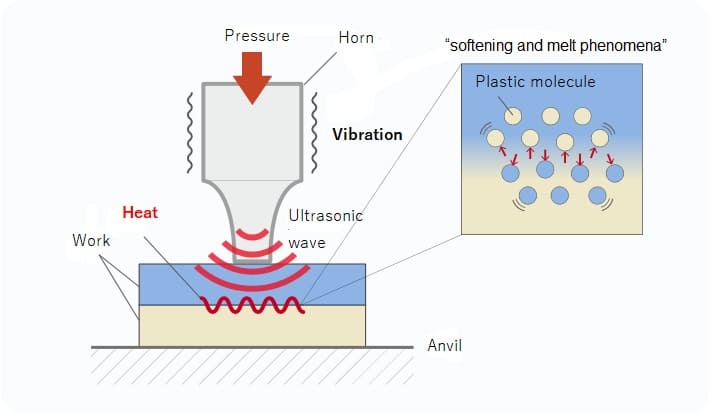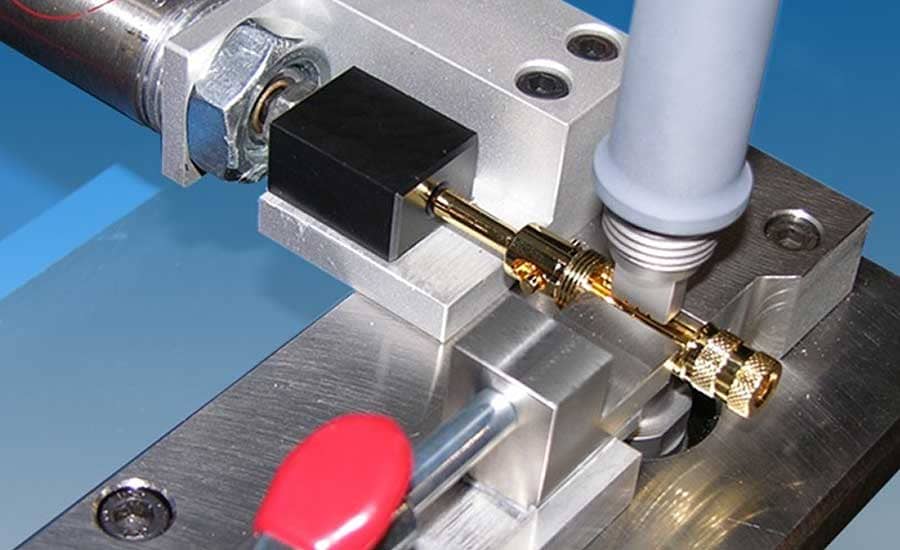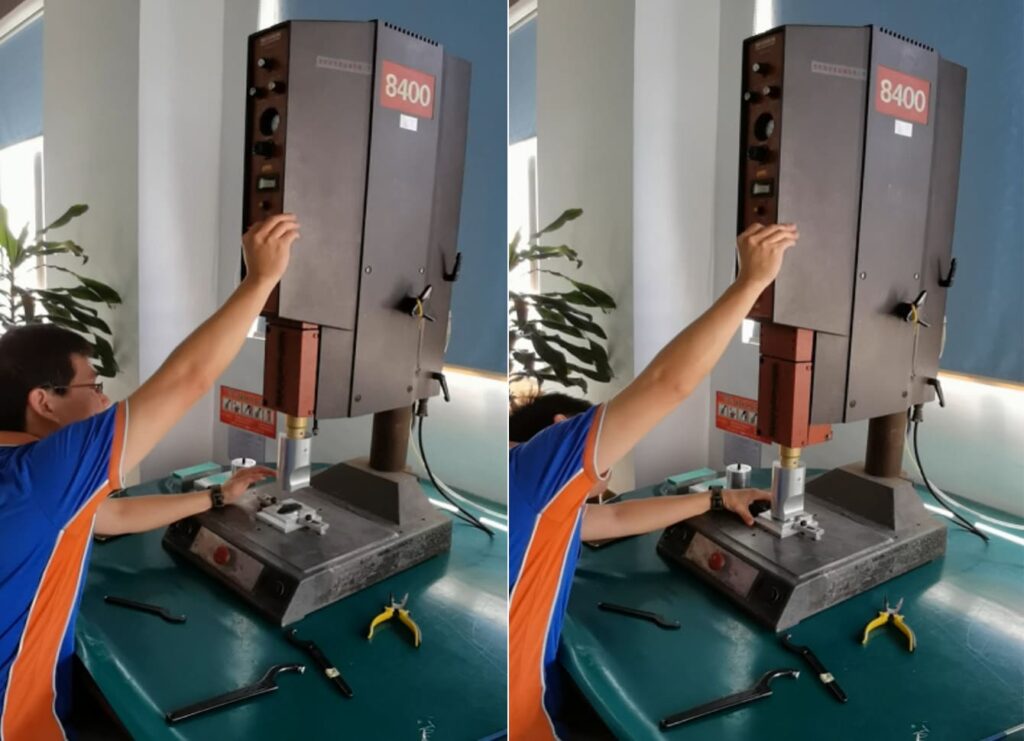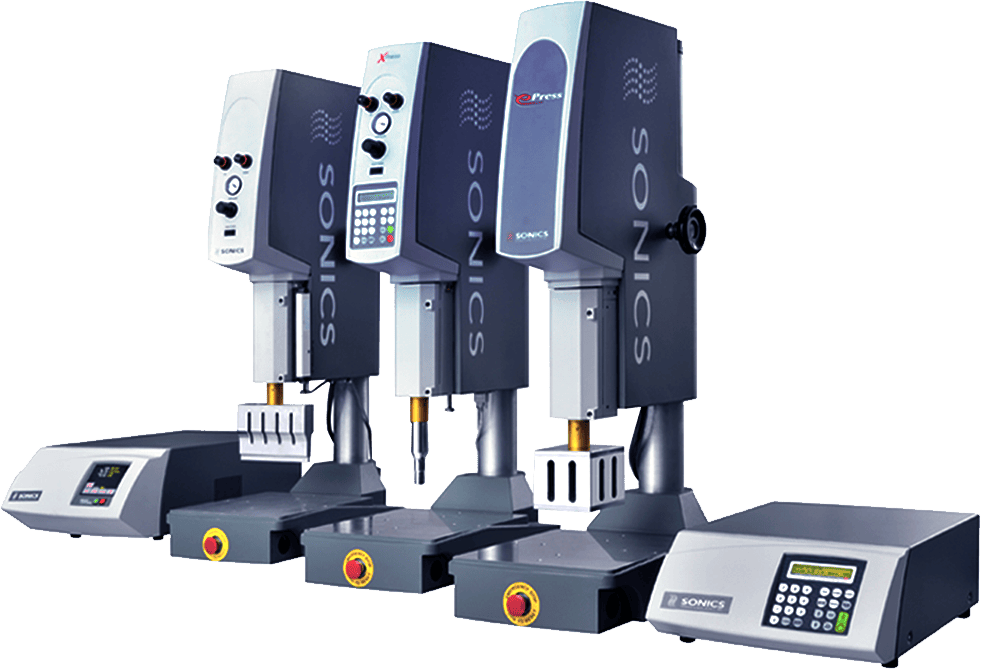Ultrasonic welding: principles, types and advantages
As an advanced welding process, ultrasonic welding is emerging in the field of industrial manufacturing with its unique advantages, bringing higher efficiency and quality to the production process. However, many people do not know it. This guide will explore the working principle, process, advantages and disadvantages of ultrasonic welding in depth to help users better understand it.
1.What is ultrasonic welding
The working principle of ultrasonic welding is to subject two materials to high-energy vibrations, which generate friction heat. A horn-shaped tool applies vibration energy to the selected joint area. The heat plasticizes the two workpieces, and when pressure is applied, the materials mix in the welding area. After the vibration stops, the combined materials cool and solidify, forming a strong, uniform bond. This process is favored by engineers because of its fast speed and low cost.

2.Ultrasonic welding working process
1.Initial assembly
The parts are fixed in a specially designed fixture to ensure precise alignment during welding.
2.Horn engagement
The horn is engaged with the upper part, and downward pressure is applied to the fixture with an electric press to transmit mechanical vibrations to the parts.
3.Welding process
The welding head generates high-frequency vibrations (usually 20kHz), which transmit mechanical energy to the components, generate heat at the interface and promote fusion.
4.Cooling stage
After welding, the vibration stops, but the pressure remains, allowing the fused components to cool and form a lasting bond.
5.Completion
After the weld cools and solidifies, the pressure is released, the horn is retracted, and the newly welded parts are released from the fixture.

3.Types of Ultrasonic Welding
1.Tight Welding
The welding head is located near the assembly joint (<6.35 mm), suitable for welding materials with low rigidity modulus.
2.Long-distance Welding
The welding head is far away from the assembly joint (>6.35 mm), suitable for welding materials with high elastic modulus.
3.Insertion
The metal parts are embedded in the pre-made holes of the mold, which has the advantages of high strength and high speed.
4.Spot Welding
Suitable for connecting parts without pre-existing holes or energy conductors.
5.Riveting
Melt and reform the pillars on the mold to mechanically lock different materials in place.
4.Ultrasonic welding compatible materials
All thermoplastics can be joined using ultrasonic welding. Different types of plastics have different welding properties, and materials with greater stiffness and higher melting temperatures require more energy. Materials with similar molecular structures can be welded together, and materials with crystalline structures can only be welded to other crystalline materials.
The following is a performance guide for some common plastics in ultrasonic welding:

5.Advantages of Ultrasonic Welding
1.Fast speed
Due to the use of high-frequency vibrations, the ultrasonic welding process is very fast, and it only takes a few seconds to heat, weld and cool the material.
2.Safe and reliable
It is a safer alternative to other welding technologies, with highly concentrated energy and minimal heat generation. Once set up and tested, the equipment is very reliable and can also be automated.
3.High quality
It can produce clean and precise joints without unnecessary plastic burrs or deformation.
4.Cost-effective
No additional materials such as bolts or adhesives are required, which reduces costs. High welding precision and high degree of automation can reduce waste and labor costs.

6.Disadvantages of ultrasonic welding
1.Material limitations
Only works for certain thermoplastics, not very effective for high humidity or tough plastics.
2.Joint limitations
Only works for certain types of joints, such as lap joints, not effective for diagonal joints, butt joints, etc.
3.Long delivery time
Setting up new operations requires time and effort, requiring custom tools and multiple rounds of testing.
4.Custom tools required
Custom tools are required for each project, which may be challenging for small companies.
5.High investment cost
The equipment is more expensive than traditional welding equipment, especially automated equipment.
7. Industries using ultrasonic welding
1.Technology industry
Used in circuit connections for smartphones, computers, manufacturing of microcircuits, computer disks, capacitors and flash drives. Conventional welding can burn delicate circuits, ultrasonic welding can connect points without causing damage.
2.Automotive industry
Door panels and dashboards of cars are often assembled using ultrasonic welding, and many engine parts are also manufactured using this technology.

3.Aerospace industry
It helps to bond thin and light plastic sheets together, and its lightweight properties are very beneficial to the aerospace industry.
4.Medical industry
Very popular in the medical industry, clean and pollution-free, suitable for assembling medical filters, pipettes and plastic textiles, etc.
5.Packaging industry
Very popular in packaging, especially when handling heat-sensitive foods. Blister packaging, candy packaging, frozen food packaging and beverage containers are all safely packaged through ultrasonic welding.
At last
As an advanced joining process, ultrasonic welding plays an important role in industrial manufacturing. It is widely used in many industries for its fast, safe, reliable, high-quality and cost-effective characteristics. Although there are some limitations, with the continuous advancement of technology, ultrasonic welding is expected to play a greater role in the future manufacturing industry.
